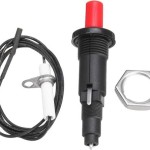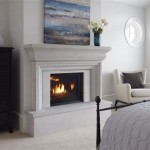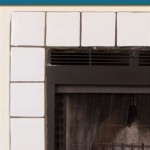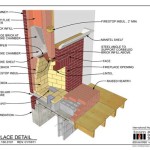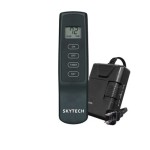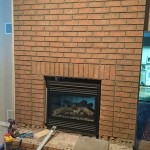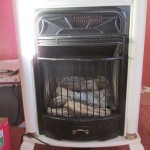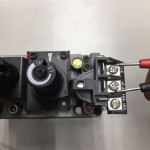Gas Outdoor Fireplaces: A Comprehensive Guide
Gas outdoor fireplaces offer a compelling blend of ambiance, convenience, and functionality, making them a popular choice for homeowners seeking to enhance their outdoor living spaces. Unlike traditional wood-burning fireplaces, gas-powered models eliminate the need for sourcing, storing, and managing firewood, while also offering instant ignition and adjustable flame control. This article provides a comprehensive overview of gas outdoor fireplaces, exploring their various types, benefits, installation considerations, and maintenance requirements.
Types of Gas Outdoor Fireplaces
The gas outdoor fireplace market encompasses a diverse range of designs and configurations, catering to various aesthetic preferences and spatial constraints. The primary distinctions lie in their construction material, installation method, and overall style.
Pre-fabricated Fireplaces: These are factory-built units typically constructed from materials like concrete, stucco, or metal. They are generally more affordable and easier to install than custom-built options. Pre-fabricated fireplaces often come in modular designs, allowing for some degree of customization through the addition of decorative elements like stone veneers or mantels. They represent a convenient solution for homeowners seeking a quick and relatively straightforward installation process.
Custom-Built Fireplaces: These fireplaces are constructed on-site, allowing for complete design flexibility. They enable homeowners to create a unique and personalized outdoor focal point that seamlessly integrates with their existing landscape and architectural style. Custom-built fireplaces often involve the use of materials like brick, stone, or concrete block, and may require the expertise of a mason or contractor. The increased design flexibility comes with a higher cost and longer installation timeframe compared to pre-fabricated models.
Fire Tables: Fire tables combine the functionality of an outdoor coffee table with the ambiance of a fireplace. They typically feature a central burner surrounded by a tabletop surface, providing a space for drinks, snacks, or decorative items. Fire tables are available in various shapes, sizes, and materials, including aluminum, steel, and composite materials. They offer a versatile and stylish addition to patios, decks, and other outdoor gathering areas.
Fire Pits: While technically not fireplaces in the traditional sense, gas fire pits provide a similar function of creating a warm and inviting outdoor atmosphere. They consist of a burner surrounded by a decorative enclosure, typically made of metal, stone, or concrete. Fire pits are available in a wide range of styles, from rustic and minimalist to modern and sophisticated. They are often a more budget-friendly option compared to full-fledged fireplaces and can be easily moved or relocated as needed.
Portable Gas Fireplaces: These are smaller, self-contained units that can be easily transported and set up in different locations. They are ideal for homeowners who want the flexibility to enjoy a fireplace on their patio one day and take it camping the next. Portable gas fireplaces typically use propane tanks as their fuel source and are designed for easy ignition and operation.
The choice of fireplace type is largely dependent on individual needs, budget, and aesthetic preferences. Consider the available space, desired style, and level of customization required when making a decision.
Benefits of Gas Outdoor Fireplaces
Gas outdoor fireplaces offer several advantages over traditional wood-burning fireplaces. These benefits contribute to their growing popularity among homeowners seeking to create comfortable and inviting outdoor spaces.
Convenience and Ease of Use: One of the most significant advantages of gas fireplaces is their convenience. They ignite instantly with the push of a button or the turn of a knob, eliminating the need for kindling, tinder, and matches. The flame height can be easily adjusted to control the heat output and ambiance. This ease of use makes gas fireplaces a practical choice for frequent use and entertaining guests.
Cleanliness and Reduced Maintenance: Unlike wood-burning fireplaces, gas fireplaces produce minimal smoke, ash, and soot. This results in a cleaner outdoor environment and reduces the amount of time and effort required for cleaning and maintenance. There is no need to haul and store firewood, or to regularly clean out ash and debris. This low-maintenance characteristic is especially appealing to homeowners with busy lifestyles.
Environmental Friendliness: Gas fireplaces are generally considered to be more environmentally friendly than wood-burning fireplaces. They produce fewer emissions and contribute less to air pollution. While natural gas is a fossil fuel, its combustion produces significantly less particulate matter and fewer greenhouse gases compared to burning wood. For homeowners concerned about their environmental footprint, a gas fireplace offers a more sustainable alternative.
Precise Temperature Control: Gas fireplaces allow for precise control over the flame height and heat output. This allows homeowners to create the perfect ambiance for their outdoor space, whether they are looking for a cozy setting or a more substantial source of heat. The ability to adjust the flame is particularly useful during fluctuating weather conditions or when entertaining guests with varying temperature preferences.
Enhanced Safety: Gas fireplaces are generally considered safer than wood-burning fireplaces. They eliminate the risk of flying sparks and embers, which can pose a fire hazard. Many gas fireplaces are equipped with safety features such as automatic shut-off valves, which prevent gas leaks and other potential hazards. With proper installation and maintenance, gas fireplaces offer a safe and reliable source of outdoor heat and ambiance.
Versatility: Gas fireplaces can be incorporated into a wide range of outdoor designs, from traditional to contemporary. They can be customized with various decorative elements, such as stone veneers, glass beads, and ceramic logs, to complement the existing landscape and architectural style. This versatility makes gas fireplaces a popular choice for homeowners seeking to create a personalized and inviting outdoor space.
Installation Considerations and Safety
Proper installation is crucial for the safe and efficient operation of a gas outdoor fireplace. It is strongly recommended to hire a qualified professional to handle the installation process, ensuring that all gas lines and connections are properly installed and tested.
Gas Line Connection: Gas fireplaces can be connected to either a natural gas line or a propane tank. Natural gas requires a permanent connection to the home's gas supply, while propane requires the use of a separate tank. The choice of fuel source will depend on individual preferences and the availability of gas lines. Ensure that the gas line is properly sized and installed according to local codes and regulations.
Ventilation: While gas fireplaces produce less smoke than wood-burning fireplaces, proper ventilation is still important to prevent the buildup of carbon monoxide. Ensure that the fireplace is installed in a well-ventilated area, away from enclosed spaces and overhangs. Follow the manufacturer's recommendations for ventilation requirements.
Clearance from Combustible Materials: Maintain a safe clearance distance between the fireplace and any combustible materials, such as trees, shrubs, and furniture. Consult the manufacturer's specifications for the recommended clearance distance. This will help prevent the risk of fire and ensure the safety of the surrounding area.
Safety Features: Ensure that the fireplace is equipped with safety features such as automatic shut-off valves and flame sensors. These features will help prevent gas leaks and other potential hazards. Regularly inspect the fireplace for any signs of damage or malfunction.
Local Codes and Regulations: Before installing a gas fireplace, check with local authorities to determine if any permits or inspections are required. Comply with all applicable codes and regulations to ensure that the installation is legal and safe. Failure to comply with local regulations can result in fines or other penalties.
Professional Installation: Hiring a qualified professional is highly recommended for the installation of a gas fireplace. A professional installer will have the necessary knowledge and experience to ensure that the fireplace is properly installed and connected to the gas line. They will also be able to identify and address any potential safety issues.
Regular Inspections: It is recommended to have the gas fireplace inspected annually by a qualified professional. This will help identify any potential problems and ensure that the fireplace is operating safely and efficiently. Regular inspections can also help extend the lifespan of the fireplace.
By carefully considering these installation considerations and safety guidelines, homeowners can ensure that their gas outdoor fireplace is a safe and enjoyable addition to their outdoor living space.
In addition to these key considerations, regular maintenance is crucial for prolonging the life and ensuring the efficient operation of a gas fireplace. This includes cleaning the burner, inspecting the gas lines for leaks, and checking the ventilation system. A well-maintained gas fireplace will provide years of enjoyment and enhance the ambiance of any outdoor setting.

Napoleon Riverside 42 Clean Face Outdoor Gas Fireplace Natural The Professionals

36 Outdoor Gas Fireplace Electronic Ignition Fine S

Allen Roth 40000 Btu Black Steel Liquid Propane Outdoor Fireplace At Com

Outdoor Gas Fireplaces Jetmaster

Outdoor Gas Fireplaces Landscaping Network

Cal Flame 78 In Tile And Stucco Propane Gas Outdoor Fireplace 22 Frp908 2 St The Home Depot

Pre Manufactured Outdoor Fireplaces Wood Gas Godby Hearth And Home

Outdoor Fireplaces Jetmaster

Outdoor Fireplaces The Chimney Chap

Cal Flame 78 In Stone Veneer And Tile Propane Gas Outdoor Fireplace 22 Frp908 3 Rk The Home Depot

